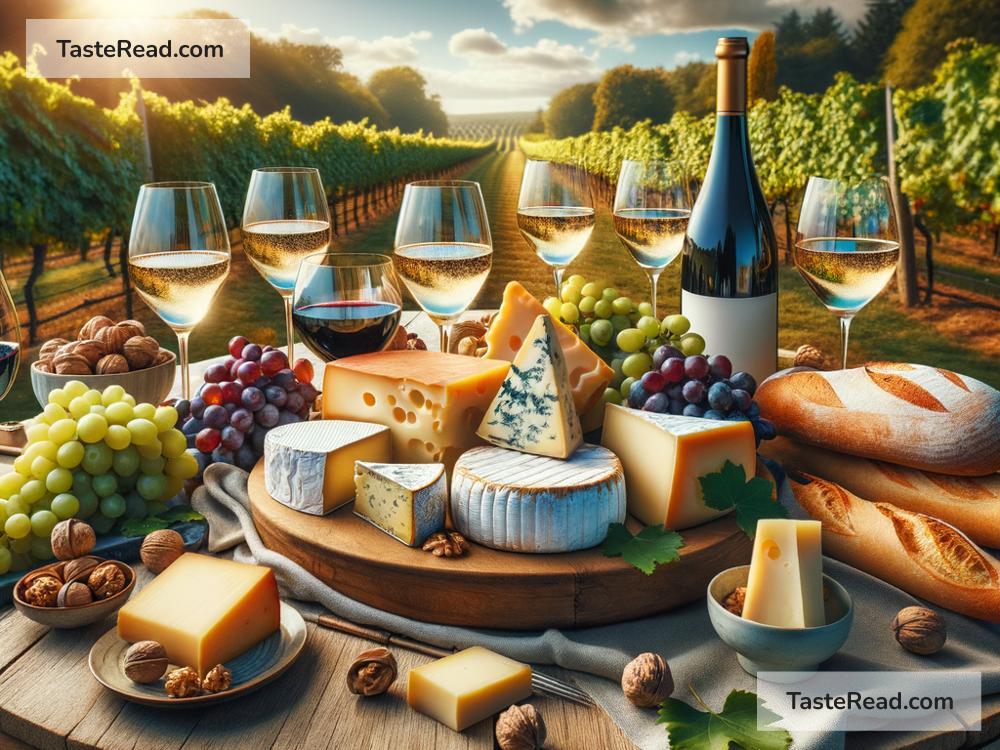The History of French Wine and Cheese Pairing Rituals
France is famous for its food, especially wine and cheese. Both have been central to French culture for centuries, and the idea of pairing them together has become an art form. But how did wine and cheese pairing begin, and why is it so important in French traditions? Let’s explore the history of this delicious practice.
A Deep Connection to the Land
To understand the origins of wine and cheese pairing, it’s important to know that French people have always cared deeply about their land. In fact, one of the most cherished aspects of French cuisine is the concept of terroir, which refers to the environment where food or wine is made, including the soil, climate, and traditions. French farmers perfected techniques for growing grapes and crafting cheeses that matched their local terroir. This connection to the land eventually influenced how people paired wine with cheese, as different regions produced unique combinations.
For example, Burgundy, a region in eastern France, is famous for its red wines made from Pinot Noir grapes. It’s also home to Époisses cheese, a creamy and pungent cheese. Over time, Burgundians learned that their local wine’s fruity and earthy flavors perfectly complemented the strong taste of Époisses. This pattern of pairing wine and cheese based on shared origins took root across France.
Ancient Beginnings
The practice of drinking wine with meals dates back to ancient times. The Greeks and Romans brought wine to France around the 6th century BC. As vineyards spread across the country, wine became a staple drink, especially since it was often safer to consume than water at the time.
Cheese-making in France started well before the Romans arrived. Evidence suggests that people were producing cheese in prehistoric times. By the Middle Ages, monks began refining techniques for making cheese, and monasteries became centers for cheese production. Monks often grew grapes and crafted wine alongside their cheesemaking, paving the way for early pairings.
While it’s unclear exactly when people began pairing wine and cheese, the two were almost always present on the dining table. For centuries, rural farmworkers enjoyed simple meals of bread, cheese, and wine, surrounded by the crops they had grown or made themselves. Eating and drinking locally were not just traditions; they were necessities.
The Rise of French Food Culture
During the Renaissance (14th–17th centuries), French cuisine began to flourish. Wealthy families and royal courts developed a taste for fine dining, and wine became an essential part of sophisticated meals. The idea of pairing wine and cheese began to gain traction during this time. French gourmands (food lovers) became interested in combining flavors, textures, and aromas, setting the stage for modern wine and cheese pairing as we know it.
By the 18th century, wine and cheese were firmly embedded in French culture. Cheeses like Brie, Roquefort, and Comté were famous throughout Europe, and French wine had become unrivaled in quality. Wine merchants and cheesemakers collaborated to perfect pairings, experimenting with how the characteristics of wine complemented different cheeses. For example, the saltiness of Roquefort, a blue cheese, goes wonderfully with the sweetness of dessert wines like Sauternes.
Cheese Boards and French Traditions
In France, serving cheese at the end of a meal became an important ritual. A plateau de fromage (cheese platter) is typically presented between the main course and dessert, and people take care to select a range of cheeses. There might be a mix of textures and flavors, from soft cheeses like Camembert to firm ones like Gruyère. This tradition allowed diners to sample different cheeses alongside their wine, encouraging experimentation with pairings.
French people follow some simple rules to make sure the flavors match well. For instance, lighter wines like Sauvignon Blanc are paired with young, mild cheeses, while heavier wines like Bordeaux go with aged, rich cheeses. Regional pairings often guide these choices, keeping the combinations rooted in tradition.
The Modern Wine and Cheese Craze
Today, wine and cheese pairing isn’t just a French pastime—it’s celebrated worldwide. French restaurants, vineyards, and farms welcome visitors eager to learn about their pairing rituals. Wine and cheese tasting events are popular everywhere, and people enjoy discovering combinations that suit their personal preferences.
With more cheese varieties and wines available than ever, the possibilities for pairing are endless. However, French people remain proud of their heritage and prefer to highlight traditional pairings based on centuries-old practices. Whether it’s a simple Brie with Chardonnay or an adventurous pairing of goat cheese with sparkling wine, the focus is always on complementing flavors and enhancing the experience.
Why It Matters
Wine and cheese pairing isn’t just about food; it’s about history, culture, and the joy of sharing meals with others. In France, these rituals represent a connection to local traditions and a celebration of the country’s richness. Sitting down to enjoy wine and cheese is a moment to appreciate the hard work of farmers, winemakers, and cheesemakers who have spent generations perfecting their craft.
As you explore wine and cheese pairings, remember that there’s no “right” answer. French history teaches us that the best pairings come from experimentation, creativity, and a respect for the land. So pour yourself a glass of wine, slice some cheese, and enjoy this timeless tradition. Bon appétit!


